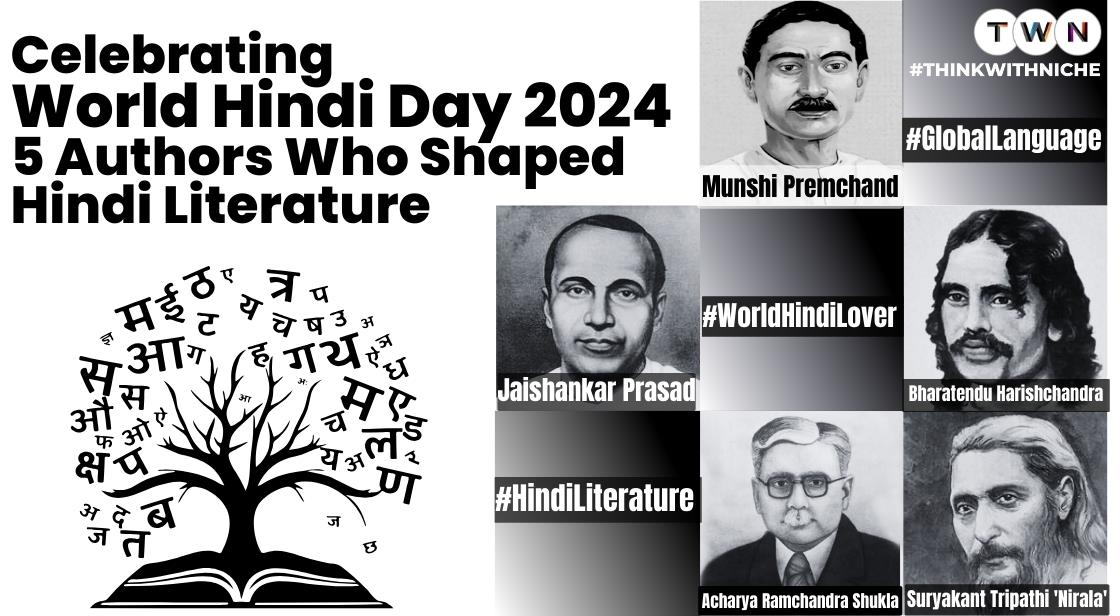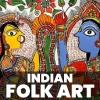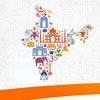Celebrating World Hindi Day 2024: 5 Authors Who Shaped Hindi Literature

Blog Post
As the aroma of samosas wafts through the air and Bollywood beats pulsate across continents, January 10th marks a special occasion: World Hindi Day.
Not just a day to dust off Hindi textbooks, it's a global celebration of a language spoken by over 529 million people, making it the third most spoken native language in the world!
Former Prime Minister of India Dr. Manmohan Singh had announced to celebrate Hindi Day on January 10 every year in 2006 for the promotion of Hindi.
The purpose of celebrating World Hindi Day is to promote the Hindi language across the world. Hindi is one of the five most spoken languages in the world. Hindi is the official language of India and is used in many other countries of the world apart from India.
Hindi language is used in the fields of education, business, culture and art. Hindi language is a rich and vibrant language. The future of Hindi language is bright and it is likely to become an important international language in the coming years.
But Hindi's beauty goes beyond sheer numbers. This year's theme, "Hindi – Bridging Traditional Knowledge and Artificial Intelligence," throws open a fascinating window into a language brimming with rich cultural heritage, poised to embrace the future.
To truly grasp the essence of this evolution, let's delve into the lives and works of five legendary Hindi writers who have shaped the landscape of this vibrant language:
On the occasion of #World Hindi Day 2024, we will take a look at five great writers of Hindi literature and their works.
These writers have made Hindi literature rich and vibrant, and their works are popular even today.
I appeal to Hindi lovers to get inspired to learn and use Hindi language.
"Remember, Hindi is not just a language; it's a bridge to a vibrant culture, a tapestry woven with rich traditions, and a voice waiting to be heard on the world stage."
#WorldHindiDay #HindiLiterature #GlobalLanguage
Celebrating World Hindi Day 2024: 5 Authors Who Shaped Hindi Literature
World Hindi Day is celebrated every year on 10 January. The objective of this day is to promote Hindi language and increase awareness to establish it as an international language.
Hindi day in india
Hindi Day is celebrated on 14 September in India. Celebrating this day started soon after independence. On 14 September 1946, the Constituent Assembly accepted Hindi written in Devanagari script as the official language of India.
Significance of World Hindi Day:
Hindi, as one of the top five most spoken languages worldwide, not only serves as India's official language but also resonates across various countries for education, business, and cultural exchanges. Its trajectory seems promising, positioning it as a potential international language in the near future.
History of World Hindi Conferences
The World Hindi Conferences were started on 10 January 1975 in Nagpur. 122 representatives from 30 countries participated in this conference. After this, World Hindi Conference has also been organized outside India in countries like Mauritius, United Kingdom, Trinidad, America etc.
Theme of World Hindi Day 2024
This year the theme of World Hindi Day is "Hindi Traditional Knowledge and Artificial Intelligence". Through this theme, an attempt will be made to show the relationship between traditional knowledge of Hindi language and artificial intelligence.
Also Read: Exploring India's Freedom Struggle: Must-Read Books for Independence Day 2023
Status of hindi in the world
Hindi is one of the five most spoken languages in the world. It is spoken in countries like India, Nepal, Fiji, Suriname, Mauritius, Guyana etc. According to the calculations of the World Economic Forum, Hindi is one of the 10 most powerful languages of the world.
To understand the global status of the Hindi language, it is important to pay attention to both the hopeful news and the continuing challenges. So let's analyze these two sides:
Positive signs:
Huge number of speakers: Hindi is the third most spoken language in the world, with approximately 529 million native speakers. This means that there is a potentially strong linguistic market with a large population.
Global presence: Hindi is spoken in more than 175 countries, especially in countries with large communities of Indian diaspora. Hindi teaching is expanding in foreign universities, which increases engagement at the global level.
Economic and Technological Progress: With the economic and technological development of India, Hindi is making its place in the digital world. Hindi learning apps, social media platforms and entertainment content are on the rise, increasing the global reach.
Government Initiatives: The Indian government is taking several steps to promote Hindi, such as World Hindi Conference, translation programs and establishment of Hindi study centers in foreign universities.
Continuing Challenges:
Dominance of English: The global dominance of English, especially in education and business sectors, is a major challenge for the development of Hindi. In many areas, English is given preference, due to which the importance of Hindi is reduced.
Dominance of regional languages: In India itself, Hindi does not get priority everywhere due to linguistic diversity. Many regional languages are strong in their respective areas, which hinders the spread of Hindi.
Lack of standardization and propagation: The abundance of different forms and scripts of Hindi creates a lack of uniformity and standardization. It is important to develop a standard Hindi for effective communication and teaching.
Lack of attractive content: Lack of adequate and attractive Hindi content in science, technology and other important subjects hinders Hindi from becoming a world language. It is necessary to increase content creation in these areas.
The situation of Hindi in the world is both optimistic and challenging. Large speaker numbers, global presence and government initiatives indicate positive signs.
But challenges like dominance of English, strength of regional languages and lack of standardization will have to be addressed.
Joint efforts of education, media, technology and government are necessary for the development of language. Only by making Hindi practical, technical and attractive can it create a strong position at the global level.
Top 5 Hindi writers and their best works
1. Munshi Premchandra (1880-1936)
Biography of Munshi Premchand
Premchandra was born on July 31, 1880 in Lamahi village near Varanasi. His father Munshi Ajaybrai was a postman. Premchandra received his primary education in Lamhi itself. Later he went to Varanasi and passed the matriculation examination from there. After this he went to Allahabad and passed BA examination from there.
Premchandra's literary career started in 1901. He initially started writing in Urdu, but later he started writing in Hindi. Premchandra's major works are:
Major works of Munshi Premchand
Stories: Premchand's stories hold an important place in Hindi literature. In his stories, there is a realistic depiction of the problems of different classes and sections of the Indian society. His major stories include "Pus ki Raat", "She said", "Do Bullock Ki Katha", "Godaan", "Karmabhoomi", "Shatran ke Khiladi" and "Gaban".
Novels: Premchand's novels are one of the most important novels of Hindi literature. In his novels there is an in-depth study of the problems of different classes and sections of the Indian society. His major novels include "Godaan", "Karmabhoomi", "Shatranj Ke Khiladi", "Navabarai" and "Gaban".
Drama: Premchandra has also written some plays. Social problems are depicted in these plays. His major plays include "Saut", "Kayakalp" and "Karmabhoomi".
Literary features of Munshi Premchand
Premchandra's literary highlights include the following:
Realism: Premchandra has depicted the reality of Indian society in his literature. He has exposed the problems of Indian society without any fear.
Social Concern: The feeling of social concern is clearly visible in Premchandra's literature. He has tried to remove social evils through his literature.
Human Values: Human values have been respected in Premchandra's literature. He has promoted values like human love, compassion, mercy and justice through his literature.
Premchandra was a great writer of Hindi literature. He has made Hindi literature rich and vibrant. His works are popular even today and enrich the Hindi language and culture.
Some additional information
- Premchandra is also known as the "Novel Emperor".
- He is considered a major writer of the "conscious era of Hindi literature".
- Premchandra's works have had a deep impact on Hindi literature.
2. Acharya Ramchandra Shukla (1884-1941)
Biography of Acharya Ramchandra Shukla
Acharya Ramchandra Shukla was born on October 4, 1884 in Agauna village of Basti district. His father was Pt. Chandrabali Shukla. Shukla ji received his primary education in Agouna only. Later he went to Mirzapur and passed the matriculation examination from there. After this he went to Allahabad and passed BA examination from there.
Shukla ji also passed MA examination from Allahabad University. After this he was appointed professor of Hindi department in Allahabad University. Shukla ji was a great scholar and critic of Hindi literature. He researched and wrote on various aspects of Hindi literature.
Major works of Acharya Ramchandra Shukla
-
Hindee saahity ka itihaas
-
Bhaarateey saahity ka itihaas
-
Saahity ke roop
-
Hindee bhaasha aur saahity
-
Kavita kya hai?
literary features
- scientific criticism
- text based criticism
- social consciousness
- Human Values
Acharya Ramchandra Shukla was a great scholar and critic of Hindi literature. He has made Hindi literature rich and vibrant. His works are popular even today and enrich the Hindi language and culture.
Some additional information
- Acharya Ramchandra Shukla is also known as "Father of Hindi literature".
- He is also known as "Scientific Critic of Hindi Literature".
- The works of Acharya Ramchandra Shukla have had a deep impact on Hindi literature.
3. Jaishankar Prasad (1889-1937)
Biography of Jaishankar Prasad
Jaishankar Prasad was born on January 30, 1889 in a prestigious Sahu family of Varanasi. His father was Pt. Devi Prasad. Prasad ji received his primary education in Varanasi only. Later he went to study at Kashi Hindu University. From there he passed the MA examination.
Prasad ji's literary career started in 1904. He initially started writing in Urdu, but later he started writing in Hindi. Major works of Prasad ji are:
Major works of Jaishankar Prasad
Poetry: Prasad ji's poems hold an important place in Hindi literature. His major poems include "Aansoo", "Kamayani", "Lahar", "Urvashi", "Chandragupta", "Kamayani Ki Bhumika" and "Nature Illustration".
Novel: Prasad ji's novel "Iravati" remained incomplete.
Drama: Prasad ji's plays "Dhruv" and "Skandagupta" are famous.
Literary features of Jaishankar Prasad
Prasad ji's literary specialties include the following:
Founder of Chhayavadi school of poetry: Prasad ji is considered to be the founder of Chhayavadi school of poetry in Hindi literature. He has used all the features of Chhayavad in his poems.
Nature illustration: Prasad ji was a great painter of nature. He has given beautiful depiction of nature in his poems.
Indian Culture and Philosophy: Prasad ji was a strong supporter of Indian culture and philosophy. He has expressed the ideas of Indian culture and philosophy in his works.
Jaishankar Prasad was a great writer of Hindi literature. He has made Hindi literature rich and vibrant. His works are popular even today and enrich the Hindi language and culture.
Some additional information
Prasad ji is considered one of the major poets of "Progressive Poetry School".
He is considered the major poet of the "Shadyavadi era".
Prasad ji's works have had a deep impact on Hindi literature.
The following characteristics of Chhayavad are found in the poems of Jaishankar Prasad:
Sentimentalism: Prasad ji's poems are full of sentimentalism.
Nature illustration: Prasad ji was a great painter of nature. He has given beautiful depiction of nature in his poems.
Dreams and Maya: Prasad ji's poems are full of dreams and illusion.
Pain and separation: The feeling of pain and separation is clearly visible in Prasad ji's poems.
The ideas of Indian culture and philosophy are clearly reflected in the works of Jaishankar Prasad. In his works he has described various aspects of Indian culture, such as religion, philosophy, history, art and literature.
Progressive ideas are also included in the works of Jaishankar Prasad. He has opposed social evils and injustice in his works.
4. Suryakant Tripathi 'Nirala' (1896-1961)
Biography of Suryakant Tripathi 'Nirala'
Suryakant Tripathi 'Nirala' was born on February 21, 1896 in Mahishadal princely state (District Medinipur) of Bengal. His father was Pt. Ramsahay Tiwari. Nirala ji's education was only till high school. Later he studied Hindi, Sanskrit and Bengali independently.
Nirala ji's literary career started in 1914. He initially started writing in Urdu, but later he started writing in Hindi. Major works of Nirala ji are:
Major works of Suryakant Tripathi 'Nirala' Major works of Suryakant Tripathi 'Nirala'
Poetry: Nirala ji's poems hold an important place in Hindi literature. His major poems include "Saroj Smriti", "Kukurmutta", "Anamika", "Tripathaga", "Parichay", "Dhoop Chhaon" and "Anima".
Story: Nirala ji's stories hold an important place in Hindi literature. His major stories include "Lili", "Sakhi", "Sukul Ki Biwi" and "Kulli Bhaat".
Novel: Nirala ji's novel "Billesur Bakariha" is famous.
Essay: Nirala ji's essays hold an important place in Hindi literature. His major essays include "The Whip" and "The Thoughts of the Wacky".
Literary features of Suryakant Tripathi 'Nirala'
Nirala ji's literary highlights include the following:
- One of the major poets of Chhayavadi poetry stream: Nirala ji is considered one of the major poets of Chhayavadi poetry stream of Hindi literature. He has used all the features of Chhayavad in his poems.
- Mysticism and Symbolism: There is a glimpse of mysticism and symbolism in the works of Nirala ji. He has used mysterious and symbolic language in his poetry.
- Spirituality: Spirituality is also included in Nirala ji's works. He has expressed spiritual thoughts in his poetry.
- Support of progressive ideas: Nirala ji was a supporter of progressive ideas. He has opposed social evils and injustice in his works.
Suryakant Tripathi 'Nirala' was a great writer of Hindi literature. He has made Hindi literature rich and vibrant. His works are popular even today and enrich the Hindi language and culture.
Some additional information
- Nirala ji is also known as "Yugdrashtha Kavi".
- He is also known as "the originator of Chhayavad".
- Nirala ji's works have had a deep impact on Hindi literature.
5. Bharatendu Harishchandra (1850-1885)
Biography of Bharatendu Harishchandra
Bharatendu Harishchandra was born on September 9, 1850 in a distinguished Sahu family of Varanasi. His father was Pt. Gopal Chandra. Bhartendu ji received his primary education in Varanasi only. Later he went to study at Kashi Hindu University. From there he passed the MA examination.
Bhartendu ji's literary career started in 1868. He initially started writing in Urdu, but later he started writing in Hindi. Major works of Bhartendu ji are:
Major works of Bharatendu Harishchandra
Drama: Bhartendu ji's plays hold an important place in Hindi literature. His major plays include "Satya Harishchandra", "Neel Darpan", "Bharat Durdasha", "Anand Kadambari" and "Sant Tulsidas".
Poetry: Bhartendu ji's poems are also important in Hindi literature. His major poems include "Bharat Durdasha", "Satya Harishchandra", "Kavitha Kaumudi" and "Premghan".
Novel: Bhartendu ji also wrote a novel "Shri Chandravali".
Essay: Bharatendu ji had also written many essays. His major essays include "Emergence and Development of Hindi Literature", "Indian Culture" and "Indian Philosophy".
Literary features of Bharatendu Harishchandra
Literary features of Bhartendu ji include the following:
Founder of Modern Hindi Literature: Bhartendu ji is considered to be the founder of the modern period of Hindi literature. He freed Hindi literature from the constraints of tradition and gave it a modern form.
Contribution in the field of drama: Bhartendu ji made important contribution in the field of Hindi drama. He introduced modern drama in Hindi.
Contribution in the field of poetry: Bharatendu ji also made important contribution in the field of Hindi poetry. He used new subject matter and language style in Hindi poetry.
Social Reformer: Bharatendu ji was also a social reformer. Through his writings he opposed the evils prevalent in the society.
Bhartendu Harishchandra was a great writer of Hindi literature. He has made Hindi literature rich and vibrant. His works are popular even today and enrich the Hindi language and culture.
Some additional information
- The name "Bhartendu Harishchandra" was given to Bharatendu ji by his father Pt. Gopal Chandra.
- Bharatendu ji had produced the play "Anand Kadambari" based on the Sanskrit play "Abhigyan Shakuntalam".
- Bhartendu ji produced the play "Satya Harishchandra" in 1875. This play is considered to be the first social drama of Hindi literature.
- Bhartendu ji composed the poem "Bharat Durdasha" in 1876. This poem is a rebellious poem against the foreign rule of India.
Conclusion
As the echoes of World Hindi Day fade, the whispers of its potential linger. We've touched upon the legacies of five towering figures, but their works are merely portals into a vast literary ocean. To truly understand Hindi's soul, we must delve deeper, embrace its nuances, and let its verses resonate within us.
Learning Hindi isn't just about mastering grammar; it's about unlocking a treasure trove of stories, poetry, and philosophies. It's about connecting with a vibrant culture, understanding diverse perspectives, and enriching our own worldview.
The future of Hindi lies not just in preserving its past but in embracing its potential. From Bollywood dialogues finding global audiences to AI tools translating ancient texts, Hindi is poised to bridge traditional knowledge and modern technology. Let's become active participants in this evolution, not just passive observers.
Whether you're a seasoned speaker or a curious beginner, remember that every "namaste" and every whispered poem contributes to the symphony of Hindi.
So, let's pledge to learn, cherish, and promote this powerful language, ensuring its legacy continues to inspire generations to come. In doing so, we celebrate not just World Hindi Day, but the very essence of a language that pulsates with life, history, and the promise of a future as vibrant as its past.
You May Like
EDITOR’S CHOICE












